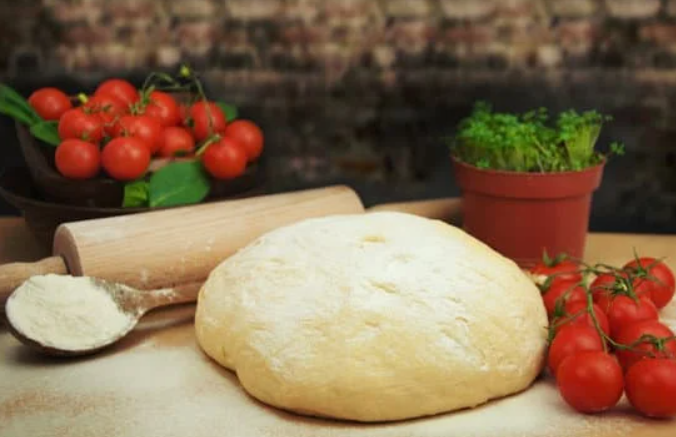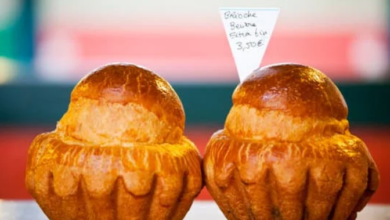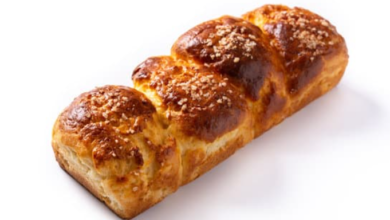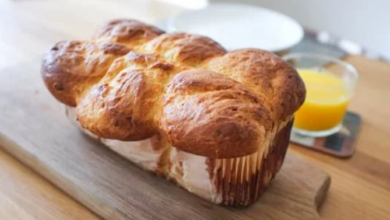Why My Brioche Dough Is Not Rising: Helpful Tips

What To Know
- Kneading develops the gluten in the dough, creating a strong structure that traps the carbon dioxide gas produced by the yeast.
- Proofing is the process of allowing the dough to rise in a warm environment.
- Proof the dough in a warm place, such as a turned-off oven with a light on.
Brioche, the epitome of French pastry, is renowned for its fluffy texture and buttery richness. However, when your brioche dough refuses to rise, it can be a frustrating and perplexing experience. This comprehensive guide will delve into the potential culprits behind this culinary conundrum, empowering you to diagnose and resolve the issue with ease.
1. Insufficient Yeast Activity
Yeast is the driving force behind dough rising. If your yeast is inactive or insufficient, it will not produce the necessary carbon dioxide gas to inflate your dough.
Possible Causes:
- Expired yeast
- Incorrect yeast type (active dry yeast requires rehydration)
- Insufficient warm water (yeast thrives in temperatures between 105-115°F)
- Lack of sugar (yeast feeds on sugar)
2. Too Much Salt
Salt can inhibit yeast activity. While a small amount of salt enhances flavor, too much can slow down or even stop the rising process.
Possible Causes:
- Accidentally adding too much salt
- Using salted butter instead of unsalted
3. Incorrect Kneading
Kneading develops the gluten in the dough, creating a strong structure that traps the carbon dioxide gas produced by the yeast. Insufficient or excessive kneading can compromise this structure.
Possible Causes:
- Under-kneading: The dough lacks sufficient gluten development
- Over-kneading: The gluten becomes too tight and elastic, preventing gas expansion
4. Cold Environment
Yeast prefers a warm environment to thrive. Cold temperatures slow down its activity, hindering the rising process.
Possible Causes:
- Cold dough ingredients
- Cold kitchen environment
- Placing the dough in the refrigerator too early
5. Too Much Flour
Adding too much flour to the dough can dilute the yeast and make it difficult for the gas to expand. This results in a dense, heavy texture.
Possible Causes:
- Accidentally adding more flour than the recipe calls for
- Using a heavy hand when measuring flour
6. Incorrect Proofing
Proofing is the process of allowing the dough to rise in a warm environment. Improper proofing can prevent the dough from fully developing its flavor and texture.
Possible Causes:
- Proofing in a too-cold or too-hot environment
- Over-proofing: The dough becomes too acidic and loses its elasticity
- Under-proofing: The dough does not have enough time to rise
7. Other Factors
- Old flour: Flour loses its strength over time, which can affect the dough’s ability to rise.
- Water temperature: Water that is too hot or too cold can kill or inhibit the yeast.
- Mixing techniques: Over-mixing the dough can damage the yeast and gluten structure.
Troubleshooting Tips
- Check the yeast: Ensure your yeast is fresh and active.
- Measure ingredients accurately: Use a kitchen scale or measuring cups to ensure precise measurements.
- Knead properly: Knead the dough until it becomes smooth and elastic, but not too tight.
- Maintain a warm environment: Proof the dough in a warm place, such as a turned-off oven with a light on.
- Proof patiently: Allow the dough to rise until it has doubled in size, but avoid over-proofing.
In a nutshell: Rising to the Occasion
Troubleshooting the reasons why your brioche dough is not rising requires a systematic approach and attention to detail. By understanding the potential culprits and implementing the troubleshooting tips provided, you can confidently overcome this baking challenge and create airy, fluffy brioche that will delight your taste buds. Remember, patience and experimentation are key to mastering this culinary art.
What You Need to Know
Q: Why is my brioche dough dense and crumbly?
A: Over-kneading, too much flour, or insufficient proofing can lead to a dense and crumbly texture.
Q: Can I use instant yeast instead of active dry yeast?
A: Yes, but you will need to adjust the amount used. Instant yeast is more concentrated, so use about 1/3 the amount of active dry yeast.
Q: How do I know when my brioche dough is ready to bake?
A: The dough should have doubled in size and pass the poke test. Gently poke the dough with your finger; if it springs back slowly, it is ready to bake.




